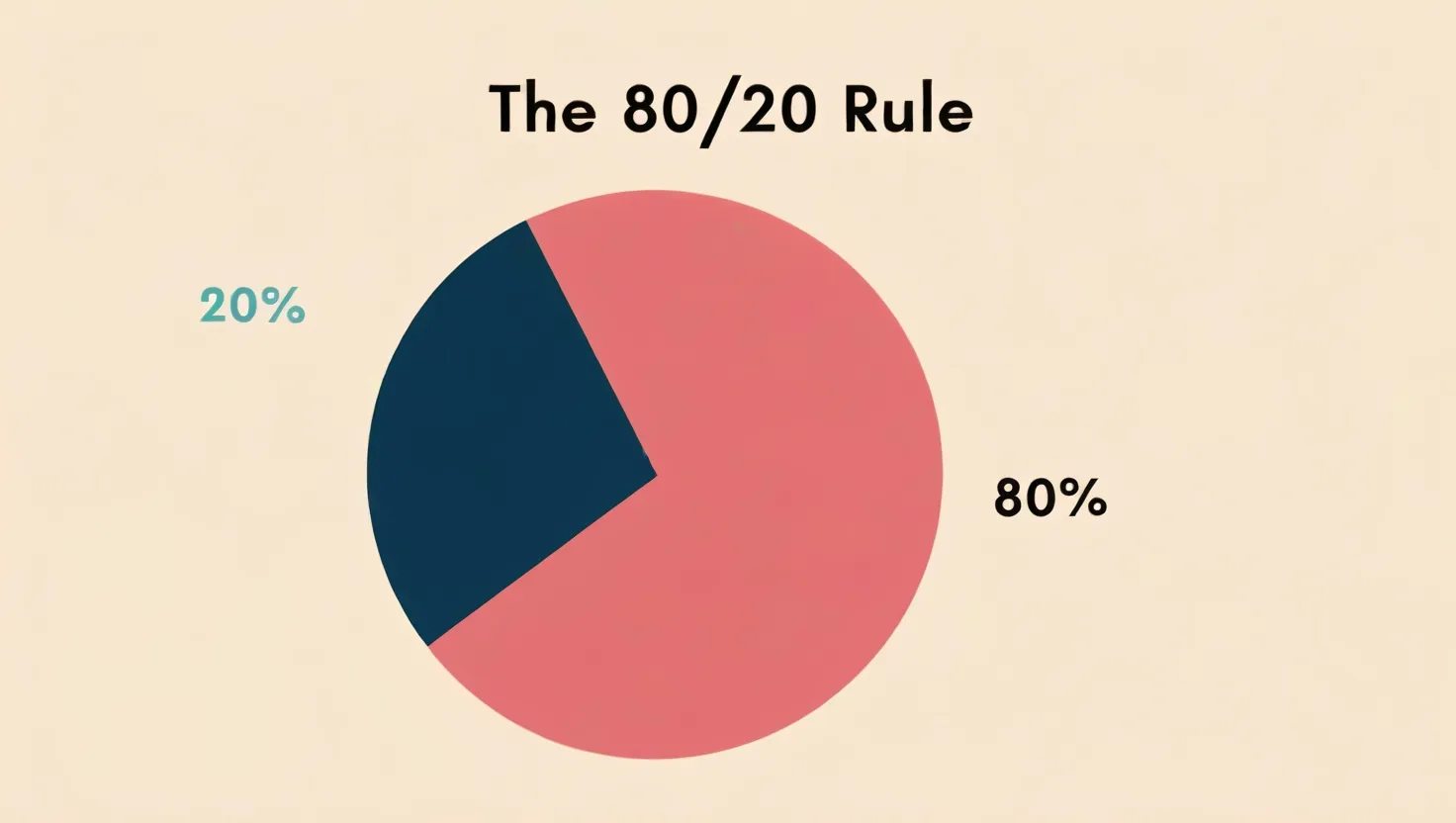In the relentless pursuit of productivity, few principles have proven as versatile and powerful as the 80/20 rule, or the Pareto Principle. This simple yet profound concept suggests that a minority of causes, inputs, or efforts often lead to a majority of the results, outputs, or rewards. Here’s how you can harness this principle to transform your work and life.
The Art of Task Prioritization
Imagine starting your day with a clear understanding of which tasks will drive the most significant outcomes. By identifying the 20% of tasks that yield 80% of your results, you can focus your energy on these high-impact activities. This isn’t about doing more; it’s about doing what truly matters.
In practice, this means analyzing your workload to pinpoint the critical tasks that have the greatest impact. For instance, in software development, a handful of features might account for most users’ satisfaction. By prioritizing these features, you can ensure that your efforts are aligned with what truly adds value.
The Time Audit: A Week in Review
Ever wondered where your time really goes? Conducting a time audit can be a revealing exercise. Track your activities for a week to determine which 20% of your time produces 80% of your output. This exercise often highlights surprising patterns – perhaps you spend a disproportionate amount of time on meetings or administrative tasks that don’t contribute significantly to your goals.
Once you have this data, you can restructure your schedule to allocate more time to those productive periods. For example, if you find that your most creative work happens in the morning, protect that time from non-essential tasks. By doing so, you can ensure that your most valuable time is dedicated to high-impact activities.
Focused Skill Development
Professional growth is often a broad and daunting endeavor, but the 80/20 principle can help you focus your efforts. Concentrate on honing the 20% of skills that contribute to 80% of your success. This approach accelerates your professional development and improves your overall performance.
Think about it this way: in any field, there are a few key skills that differentiate the top performers from the rest. By identifying and mastering these skills, you can achieve a disproportionate impact. For instance, in writing, mastering the art of crafting compelling headlines and introductions can significantly boost your readership, even if you don’t perfect every other aspect of your writing.
Streamlining Decision Making
Decision making is a critical aspect of any professional’s day, but it can often be bogged down by unnecessary complexity. The 80/20 rule can help you streamline this process by identifying the crucial 20% of information needed to make 80% of your decisions effectively.
This involves categorizing your problems into similar groups and assigning a value to each based on their impact. By focusing on the top 20% of issues that have the most significant consequences, you can develop solutions that resolve multiple problems at once. For example, in project management, identifying the root causes of delays can help you implement targeted solutions that address the majority of your timeline issues.
Client Management: The Vital Few
In business, not all clients are created equal. Recognizing that 20% of your clients often generate 80% of your revenue can be a game-changer. By prioritizing these key relationships, you can optimize business growth and customer satisfaction.
This doesn’t mean neglecting other clients, but rather allocating your time and resources in a way that reflects their importance. For instance, offering personalized service or exclusive benefits to your top clients can foster loyalty and drive further growth. It’s about understanding that a small portion of your client base has a disproportionate impact on your business.
Reducing Workload: The Power of Delegation
Finally, the 80/20 principle can help you reduce your workload by eliminating or delegating the 80% of tasks that contribute only 20% of value. This frees up time and mental space for more impactful work.
Imagine if you could offload administrative tasks, routine checks, or other non-essential activities that consume a significant portion of your day. By doing so, you can focus on the tasks that truly drive results. For example, in field service management, automating routine scheduling tasks can allow technicians to spend more time on actual service delivery, leading to higher productivity and customer satisfaction.
The Culture of Efficiency
Implementing the 80/20 principle isn’t just about individual productivity; it can also foster a culture of efficiency within your organization. By focusing on the vital few tasks, processes, or clients, you can eliminate unnecessary complexity and streamline operations.
This approach encourages continuous improvement by regularly evaluating priorities and ensuring that efforts remain focused on high-impact areas. It’s a mindset shift from trying to do everything to doing what truly matters. In resource-constrained environments, this principle is particularly valuable, as every dollar and every minute counts.
The Misconception of Effort
There’s a common misconception about the 80/20 rule: that with 20% of effort, you can achieve 80% of the results. This isn’t the case. The principle is not about minimizing effort but about focusing your effort on a specific portion of work to create a bigger impact. You still need to put 100% of effort into that 20% of focus to achieve 80% of the results.
Real-World Applications
The 80/20 principle is not just a theoretical concept; it has real-world applications across various domains. In e-discovery projects, for instance, focusing on getting the data properly collected and processed can eliminate costly errors and improve project performance. Similarly, in field service, identifying the critical 20% of tasks that drive the most significant results can enhance productivity and reduce unnecessary travel time.
Conclusion
The 80/20 principle is more than just a productivity tool; it’s a way of life. By applying this principle to task prioritization, time management, skill development, decision making, client management, and workload reduction, you can achieve remarkable efficiency and effectiveness.
It’s about working smart, not hard, and recognizing that a small portion of your efforts can lead to a disproportionate impact. As you integrate this principle into your daily routine, you’ll find that you’re not just getting more done; you’re getting the right things done. And that’s the true essence of productivity.






